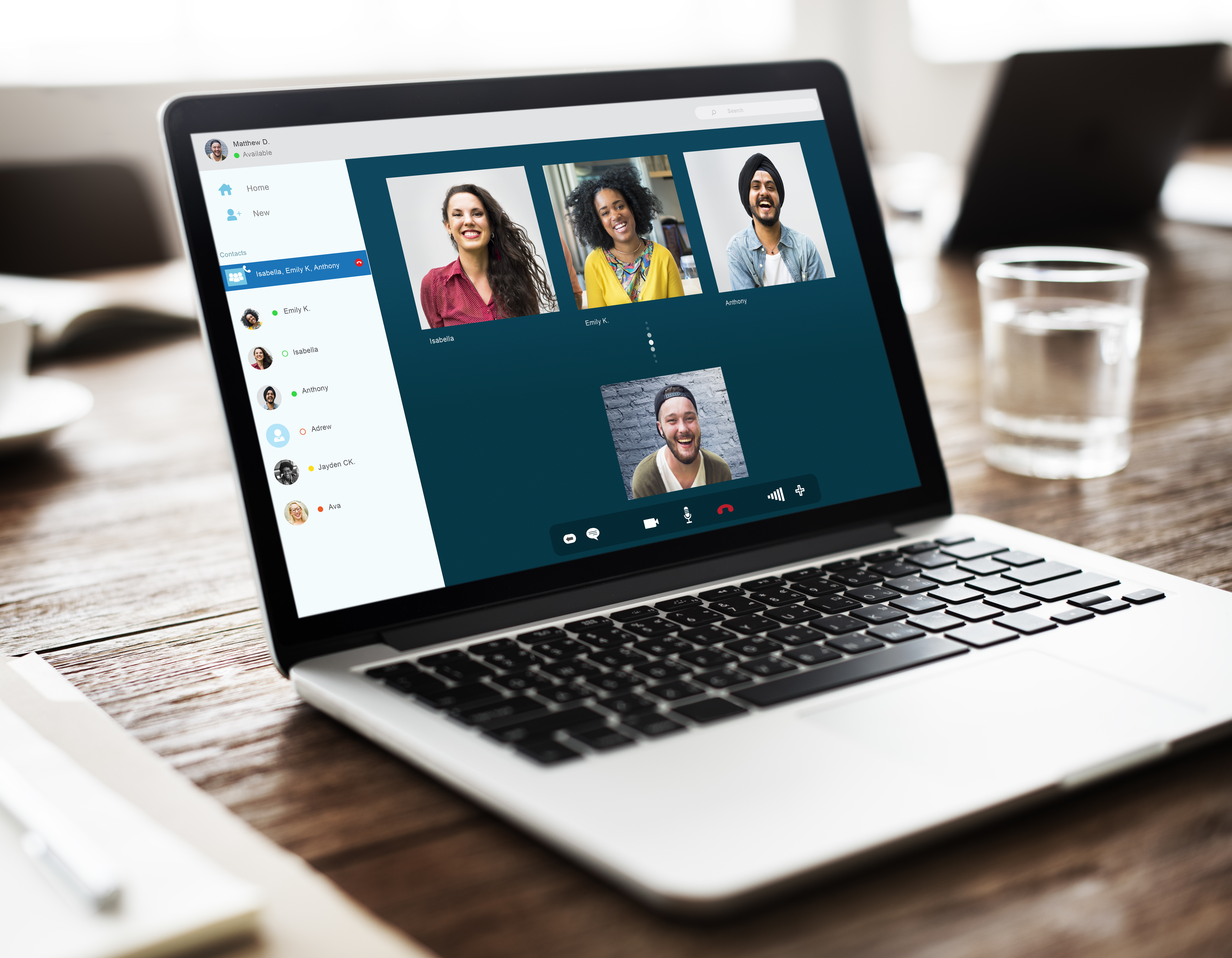Most of us in professional services probably participate in a few conference calls a day. But that number is about to go way up — and every participant in the call is going to be in a different location.
The Denterlein team gathered virtually on Friday to connect after a long week of typical work interspersed with partner with clients to develop operational strategies, internal announcements and press releases we couldn’t have anticipated two weeks ago. In addition to checking in and catching up, we shared some of our most successful tips for effective and productive conference calls and video-conferences. I’ve summarized the best below — but add yours in the comments.
1. Create detailed agendas: Written agendas circulated in advance, with notations on who is leading which section of the call, keeps everyone clear on roles and responsibilities. It makes it easier for your virtual participants to follow along and transitioning from one section of the agenda to the next is seamless.
2. Appoint a leader: Having a clear leader (it’s worth it to name the person at the outset of the call) helps keep the call on track, assure participation by everyone on the call and limits confusion. A few things a leader can do:
-
-
- Conduct roll call at the beginning: Reading off a list of participants and having people say hello at the outset is less chaotic then people shouting out names. Also, remind people to note who they are, every time they speak (we’ll all know each other’s voices by the end of this thing, but still good practice).
- Check in and solicit comments: At the end of every section of the agenda, the leader can ask if there are any comments, something that is typically obvious via physical cues in in-person meetings.
- Agree on a process for commenting/asking questions: Setting this process at the beginning limits the interruptions, while maintaining the benefits of feedback.
- Assign someone to take notes and report out on tasks: Every call should end with a quick recap from the notekeeper on deliverable and next steps, and the recap (along with relevant notes) should be circulated via email. (By the way, this should be standard practice for all meetings!)
-
3. Use a chat function: How many of us have used the mute button to confer with teammates around the conference room table before weighing in on a call? Or can tell by a glance which team member will jump in and answer a question during an in-person meeting. Chat software (our firm uses Microsoft teams, but Slack, Yammer, G-chat and others are all options) can help smooth conversations when no one is in the same place.
4. Test the software: For many, this will be the first time using video-conferencing, sharing screens, or having moderated conference call. Test the technology before hand to eliminate wasted time dealing with glitches.
5. Maintain personal connections: Informal chatting pre and post meeting help people make personal connections, fostering better teamwork. It requires some intentional focus to foster this via tele- or video conference. Ask a light-hearted question to the participants pre or post agenda to start the ball rolling and make sure all get involved.
6. Some tips for video-conference:
-
-
- Raise your hand before speaking
- Make sure the background behind you isn’t distracting; also, try to keep clutter out of your own work space to support you won focus on both video and calls
- As with an in-person meeting, pay attention; it’s very obvious when you are not!
- Though your image may be small, make it professional; attire and hair should remain professional
- If you have multiple adults working from home, create a schedule to be sure there is an appropriate workspace for a videoconference that is free from distraction/background noise
- Do your best to secure pets and children in a different location!
-
With schools cancelled across the region, I suspect many of us will have moments akin to the time when a BBC Skype interview was interrupted by a young child. Have patience with one another and understand that there may be incidental moments of lost focus that we can’t control. Do your best to get back on track and work together to make this process successful!

